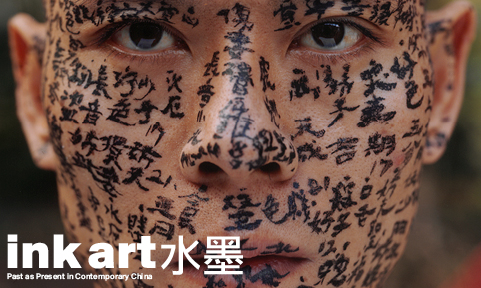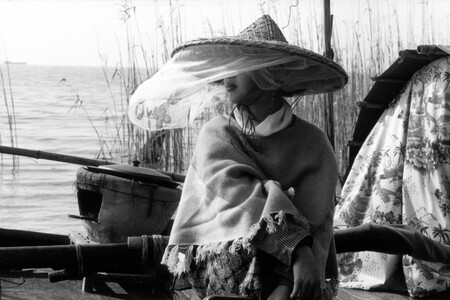Group Exhibition The Metropolitan Museum of Art, New York, U.S.A.
Ink Art: Past as Present in Contemporary China
December 11, 2013–April 6, 2014
Location: Galleries for Chinese Painting and Calligraphy
Press preview: Monday, December 9, 10 a.m. – noon
A major loan exhibition of contemporary Chinese art presenting works by 35 artists born in China will go on view at The Metropolitan Museum of Art, beginning December 11. Featuring 70 works in various media—paintings, calligraphy, photographs, woodblock prints, video, and sculpture—that were created during the past three decades, Ink Art: Past as Present in Contemporary China will demonstrate how China's ancient pattern of seeking cultural renewal through the reinterpretation of past models remains a viable creative path. Although all of the artists have transformed their sources through new modes of expression, visitors will recognize thematic, aesthetic, or technical attributes in their creations that have meaningful links to China's artistic past. The exhibition will be organized thematically into four parts and will include such highlights as Xu Bing's dramatic Book from the Sky (ca. 1988), an installation that will fill an entire gallery; Family Tree (2000), a set of vivid photographs documenting a performance by Zhang Huan in which his facial features—and his identity—are obscured gradually by physiognomic texts that are inscribed directly onto his face; and Map of China (2006) by Ai Weiwei, which is constructed entirely of wood salvaged from demolished Qing dynasty temples.
Maxwell K. Hearn, Douglas Dillon Chairman of the Metropolitan Museum's Department of Asian Art, stated: "A unique feature of this landmark exhibition is the way in which it positions contemporary art from a non-Western culture within an encyclopedic art museum. Instead of being presented by the Metropolitan's Department of Modern and Contemporary Art, Ink Art is curated by members of the Department of Asian Art and displayed in the Museum's permanent galleries for Chinese painting and calligraphy, featuring artworks that may best be understood as part of the continuum of China's traditional culture. While these works may also be appreciated from the perspective of global art, the curatorial argument is that, by examining them through the lens of Chinese historical artistic paradigms, layers of meaning and cultural significance that might otherwise go unnoticed are revealed. Ultimately, both points of view contribute to a more enriched understanding of these creations."
Section 1: The Written Word
Writing is China's highest form of artistic expression as well as its most fundamental means of communication. Valued for both its semantic content and aesthetic significance, the written word conveys personal as well as public meaning. Given the inherent power of this universal medium, the written word—particularly brush-written calligraphy—has been a rich terrain for artistic exploration in China. The exhibition will feature key early works by Xu Bing (b. 1955), Gu Wenda (b. 1955), Qiu Zhijie (b. 1969), and Zhang Huan (b. 1965)—all of whom have found ways to subvert the semantic and aesthetic functions of language.
Section 2: New Landscapes
For more than one thousand years, landscape imagery has been used to convey values and moral standards, both of individuals and of society as a whole. Today, as China is being transformed by modernization, artists continue to mine the symbolic potential of landscape imagery to comment on the changing face of China and to explore the "mind landscape" of the individual. A rich selection of paintings, photographs, videos, and films in this section will highlight the diverse ways in which contemporary artists have drawn inspiration from earlier compositions and themes. On view will be works by Ren Jian (b. 1955), Liu Dan (b. 1953), and Yang Yongliang (b. 1980), all of whom have revived and transformed the monumental handscroll format with powerful new imagery. This section will also display works by Ai Weiwei (b. 1957), Shi Guorui (b. 1964), and Xing Danwen (b. 1967) that offer stark commentaries on the impersonal nature of China's expanding urban landscapes; and works by Fang Lijun (b. 1963), Yang Fudong (b. 1971), and Qiu Anxiong (b. 1972), who use woodblock printing, film, or video to explore man's increasing disconnection from the natural environment.
Section 3: Abstraction
Abstraction is at the heart of Chinese painting and calligraphy. Because the brush mark has always been recognized as a record of the artist's hand, in addition to performing a descriptive or semantic role, both painting and calligraphy have been valued for their abstract expressive potential. Benefitting from such a rich tradition of exploiting the abstract and symbolic qualities of painting and writing, contemporary Chinese artists have been able selectively to adopt Western notions of nonfigurative art to augment and expand their expressive goals. The work by classically trained calligrapher Wang Dongling (b. 1945) included in this section will exemplify those artists who have used their command of traditional techniques to create large-scale abstractions emphasizing the dynamic gestural qualities of calligraphy while divorcing the work from any suggestion of semantic signification. Two examples on view from the Divine Light series by Zhang Yu (b. 1959) feature circular or rectilinear forms that evoke cosmic events—an exploding star or a planet coalescing from a sphere of gaseous elements—that are at once beautiful and terrifying.
Section 4: Beyond the Brush
A final component of the exhibition will introduce works that neither fit into the above three thematic categories nor derive their primary identity from traditional forms of ink art; yet they exhibit an ink art aesthetic through their rich associations with Chinese literati pastimes or patronage. Highlights in this section will be two performance-related pieces: an album by Cai Guo-Qiang (b. 1957) that envisions his plan for Project to Extend the Great Wall of China by 10,000 Meters: Project for Extraterrestrials No. 10, presented together with a three-channel video of the actual event; and Huang Yongping's (b. 1954) 43-foot-long handscroll documenting his installation pieces from 1985 to 2001. Other works on view will include scholars' rocks made from silicone or stainless steel by Zhang Jianjun (b. 1955) and Zhan Wang (b. 1962) and a dragon robe made of polyvinyl chloride by Wang Jin (b. 1962).
In conjunction with the exhibition, the Museum will present a Sunday at the Met program on February 23, 2014, as well as gallery talks, a studio workshop, an artist demonstration of calligraphy techniques, and a teen program called Ink Experiments.
The exhibition will be accompanied by a fully illustrated catalogue. This publication is made possible by The Andrew W. Mellon Foundation, the Richard and Geneva Hofheimer Memorial Fund, and Marie-Hélène Weill.
Ink Art: Past as Present in Contemporary China is curated by Maxwell K. Hearn.
The exhibition will be featured on the Museum's website (www.metmuseum.org).
More Pictures:





